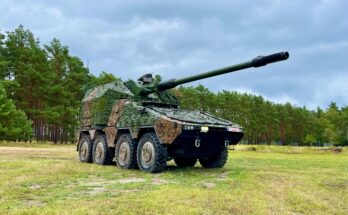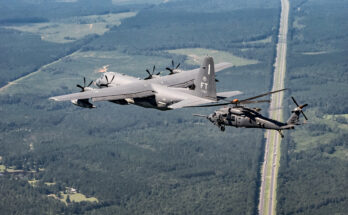
INS Arihant. Image – Indian Navy
With a total of four Arihant class ballistic missile submarines (SSBN) planned, an Indian sea-based deterrent force is now an established reality. These submarines are being supported by large-scale investment in command and control systems that include long-range communication facilities, dedicated hardened bases, and the appropriate support vessels. It is now clear that India is committed to achieving a nuclear triad, which would be in accordance with standard nuclear warfighting doctrine.
The first submarine of class, Arihant, was commissioned in August 2016. The second submarine of class, Arighat, was originally scheduled for completion in 2019 and then August 2022. The goal now is for it to be commissioned before the end of 2023. The third submarine is still scheduled to be completed around 2024. Once the four Arihant subs are completed, subsequent construction will shift to a new design referred to as the Arihant Follow-On, or S5, class.
Where the SSN side of the fleet will go from here remains open to question. In theory, the Indian Navy will require a force level of six SSNs to support the current target of four Arihant class SSBN boats. A start was made with the lease of a Project 971 Akula class nuclear-powered submarine, and there have been off-and-on negotiations for the lease of a second submarine of this type.
In 2014, Indian Defence Minister Manohar Parrikar was at pains to point out that there were no plans to build an indigenous nuclear-powered attack submarine and that this role would be taken by conventional submarines equipped with air-independent propulsion (AIP). At that time, we cautioned readers to remember the old adage, “Never believe anything until it has been officially denied.” Sure enough, in 2018, the Indian Cabinet approved a plan to establish a fleet of at least six SSNs.
The Indian SSN (attack submarine) project has moved from a vague intent to a funded and programmed reality. However, the feasibility and project definition studies are at an early stage and are not scheduled to be completed until 2025 at the earliest. This suggests that the design work is unlikely to be completed until 2030. Thus, the first Indian-built SSN is unlikely to be completed until 2035.
It is interesting to note that France may strengthen ties with India in the wake of the U.S.’s behind-the-back deal with Australia giving that country closely guarded nuclear submarine technology to build its own nuclear subs as opposed to, as previously planned, buying conventionally powered Shortfin Barracuda submarines from France. Stung by the financial loss of the Australian contract and perceived backstabbing by its American ally, France is in a strong position to leverage its own nuclear submarine technology. In March 2023, France made an offer to India to jointly develop six nuclear submarines. This would be a win not only for India (no longer having to rely on Russia), but also for France in that it could recoup all the effort put into the nixed Australia deal.
Forecast International’s Warships Forecast covers the key submarine, aircraft carrier, surface combatant, amphibious warfare, and underway replenishment programs that will dominate the warship industry over the next decade and beyond. It details the market impact of numerous key programs, including the Franco-Italian FREMM class frigate, the Queen Elizabeth class aircraft carrier, and the SSN-774 Virginia class submarine. Each report contains a full design history of the ship, an extensive list of major contractors and subcomponent suppliers, and a wealth of information on the ship’s performance and operational capabilities. Click here to learn more.
For more than 30 years, Richard has performed numerous roles as a top analyst for Forecast International. Currently, Richard is the Group Leader and Lead Analyst for Forecast International's Traditional Defense Systems, which covers all aspects of naval warfare, military vehicles, ordnance and munitions, missiles, and unmanned vehicles.
Having previously been Forecast International's Electronics Group Leader for 20-plus years, Richard established Electro-Optical Systems Forecast, as well as having been the prime editor of Electronic Systems Forecast, Land & Sea-Based Electronics Forecast, and C4I Forecast. Additionally, Richard has served as the Naval Systems Group Leader responsible for Anti-Submarine Warfare Forecast andWarships Forecast.




